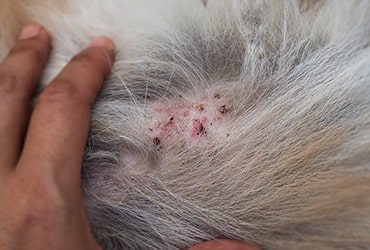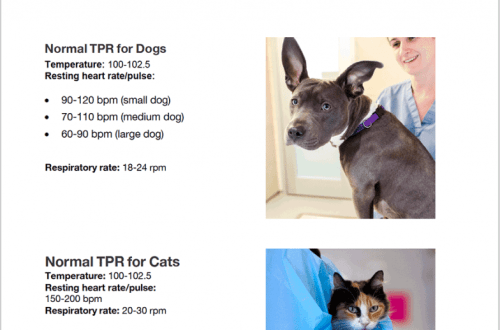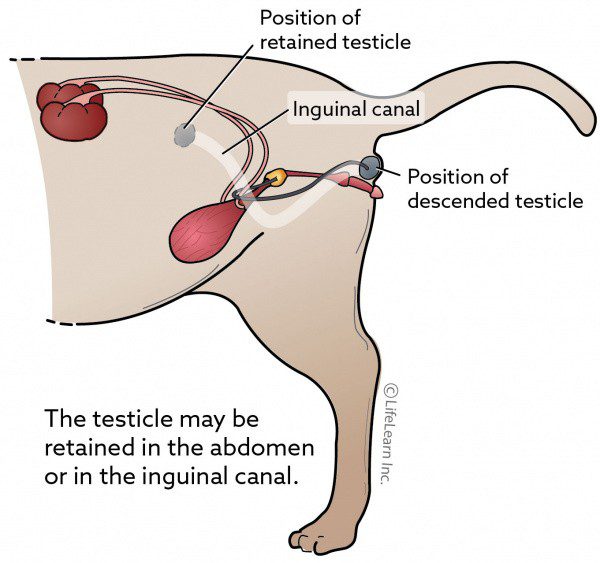
cryptorchidism in cats
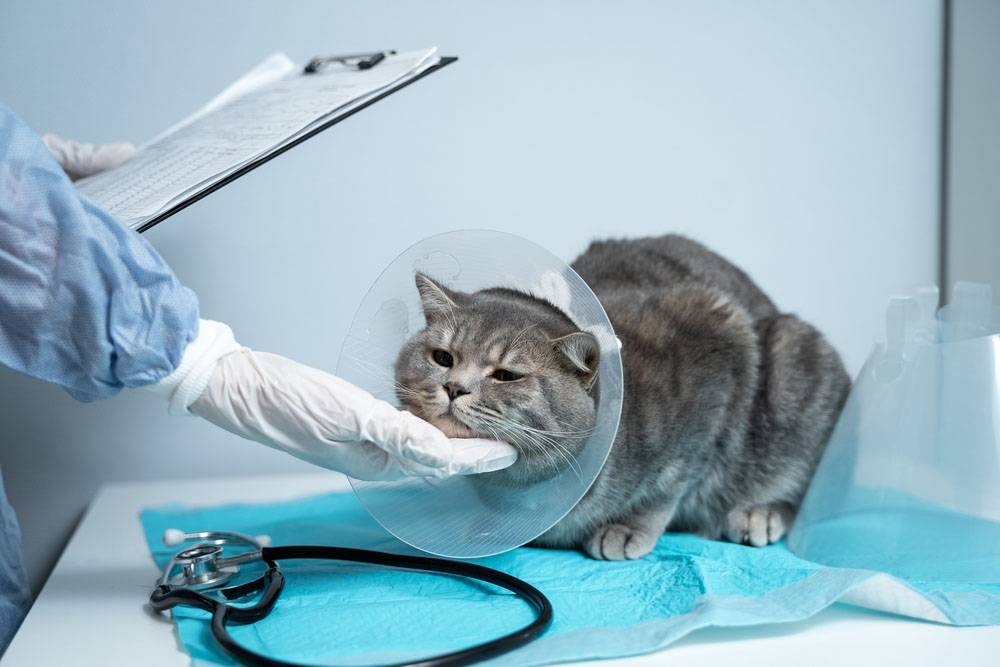
Contents
What is cryptorchidism
A cryptorchid cat is an animal with a pathology of the development of the genital organs. He has one or two testicles that did not descend into the scrotum, but remained in the abdominal cavity or under the skin. This condition occurs in cats infrequently – no more than 2-3% of cases. Cats do not show any concern about this.
Animals do not experience pain and are not even aware of the presence of such an ailment.
At first, cryptorchidism does not interfere with the life of a cat, and with unilateral cryptorchidism, animals are even able to have offspring. However, nature intended that the testicles be located outside the body of the animal and be at a lower temperature, close to the ambient temperature. Only in such conditions, the testes and spermatozoa develop correctly.
If the temperature of the testis is higher than necessary, then the spermatozoa in it are not able to survive, and the tissues of the testis undergo changes. At the mature age of the animal, approximately older than 8 years, undescended testicles are highly likely to degenerate into tumor tissues, most often into malignant cancer. This disease can have extremely negative prognosis, the tumor metastasizes to other organs and eventually leads to the death of the pet. Such animals must be examined and treated, as well as withdrawn from breeding, since this disease is hereditary. Castration of a cryptorchid cat is considered a mandatory procedure.
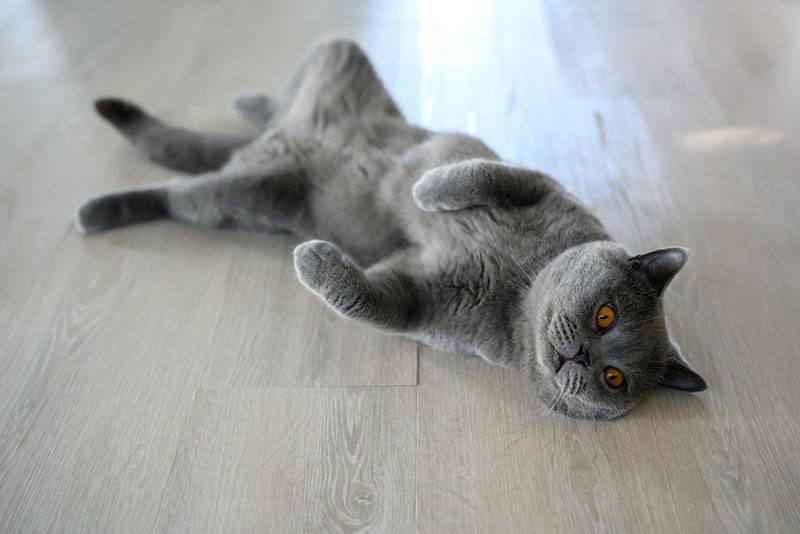
Types of cryptorchidism in cats
There are several types of cryptorchidism that occur in males.
Unilateral cryptorchidism
This condition is most common in cats. In this case, one testicle can be found in the cat’s scrotum. Such animals are even capable of having offspring.
Bilateral cryptorchidism
This condition is extremely rare in cats. With her, both testes will be absent in the scrotum. Most likely, the cat will not be able to have offspring, since the increased temperature of the environment of the testicles will not allow spermatozoa to develop.
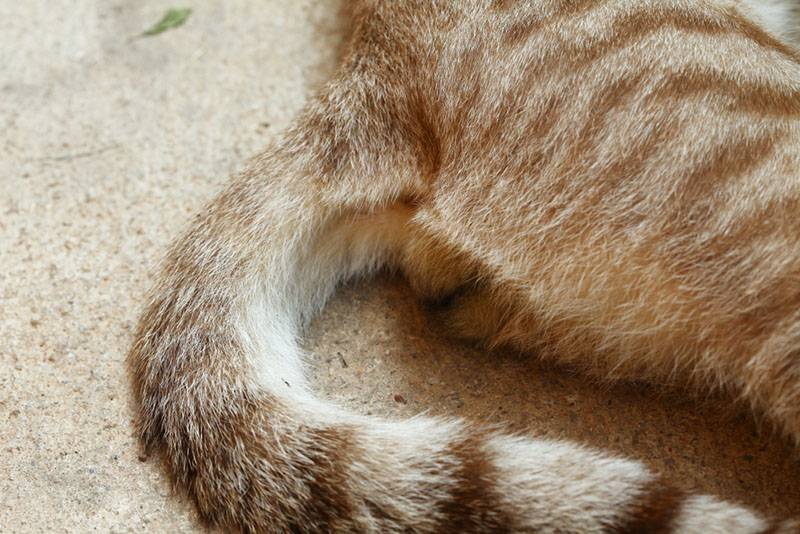
Inguinal cryptorchidism
In this condition, an undescended testicle can most often be felt under the skin in the groin area. If the kitten is under 6 months old, then there is still a chance that the testicle will eventually descend into the scrotum. After the age of six months, it is no longer worth waiting, the animal is considered a cryptorchid.
Abdominal cryptorchidism
In this case, it is impossible to find the testicle by probing, since it is located deep in the abdominal cavity. Usually, the testicles descend to the scrotum by the time the kitten is born, and by 2 months it is very easy to feel them.
If abdominal cryptorchidism is suspected, it is most likely not worth expecting testicular descent before 6 months.

Causes of cryptorchidism
During fetal development in kittens, the testicles are located in the abdominal cavity. As they grow, they move to the inguinal canal. The testis has a special ligament called the gubernaculum.
This ligament pulls the testis out of the abdomen through the inguinal canal towards the scrotum. The main factors contributing to this are the force of gravity and the pressure of the surrounding organs, as well as the hormonal background. Under the influence of sex hormones, the testicular ligament contracts and pulls the testicles up to the scrotum. This means that there are many possible problems in the path of the testis to the scrotum. The inguinal ring must be wide enough for the testis to pass through. The testicle itself, on the contrary, cannot be too large and get stuck. The spermatic cord must be long enough to extend from the abdomen to the scrotum.
After birth, kittens normally have testicles already in the scrotum. This process is completed completely at the age of four to six months, at which time the inguinal rings close and the testicle will no longer be able to pass through them in any direction. There are several proven causes of cryptorchidism in a cat. However, to find out what was the reason for its appearance in your animal, most often, it will not work.
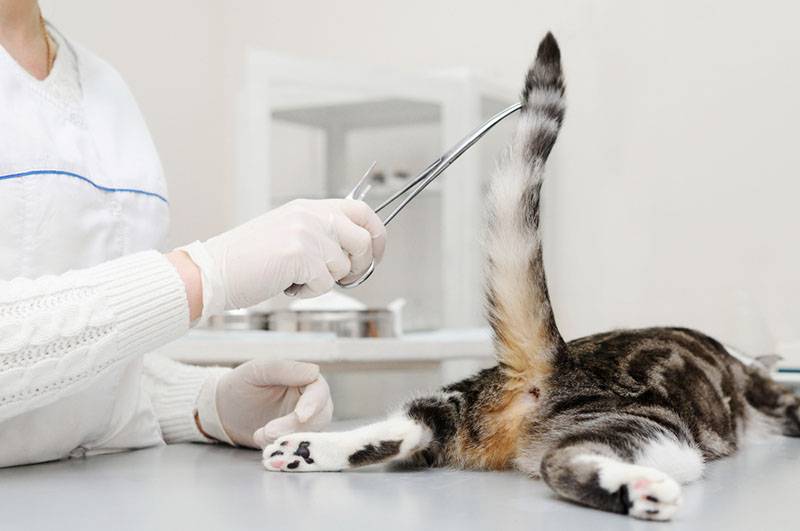
So, the possible reasons why the cat did not drop one testicle:
Developmental abnormalities of the testicles and inguinal rings, such as testes that are too large or the inguinal canal that is too narrow
Too short spermatic cord
Small scrotum size
Hormonal disorders such as sex hormone deficiency
Inflammatory process in the testes or scrotum, for example, due to bacterial and viral intrauterine infections
Injury to the testis or scrotum.
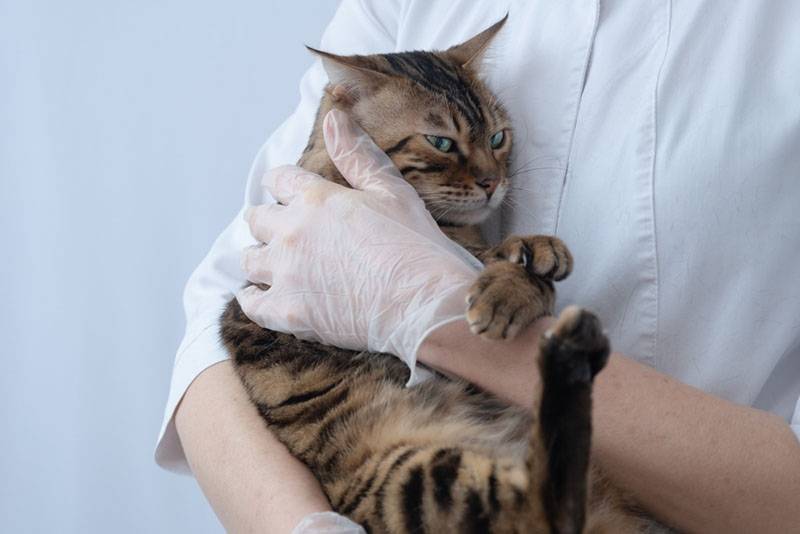
Diagnostics
The primary diagnosis of cryptorchidism in a cat is not difficult and can be easily done at home by the owners themselves. It is necessary to feel the cat’s scrotum with your fingers, while applying excessive force is not required. Normally, two small, very clear balls will be palpated in the scrotum – these are the testes. If there is only one ball in the scrotum, then the cat is a unilateral cryptorchid. If none, then two-sided.
Conscientious breeders usually know that the cat’s testicles have not descended and warn about this condition before giving it to a new family. Sometimes the owners can independently detect the missing testis under the skin, but more often only the doctor at the reception succeeds.
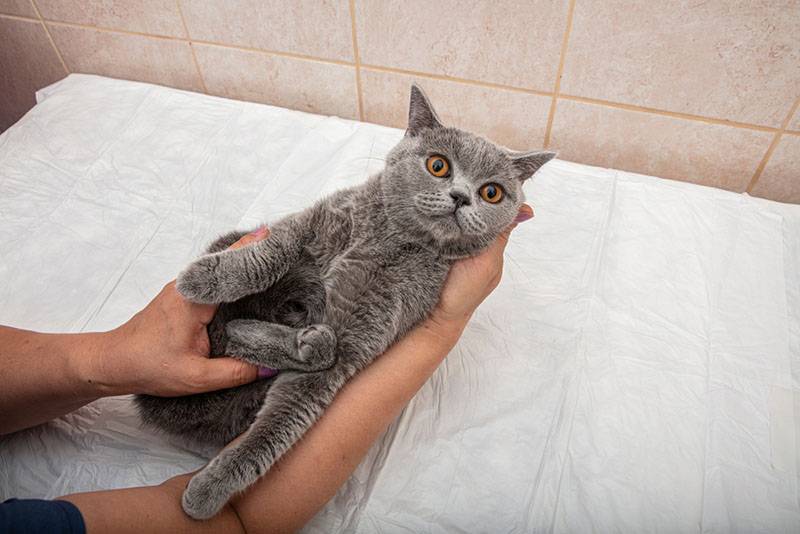
You can try to detect the testis remaining in the abdominal cavity using ultrasound. Ultrasound is a study that is very dependent on the experience of the specialist and the quality of the equipment. Also, the quality of the study will depend on how calmly the animal lies. If the cat is very nervous, trying to scratch and run away, then it will also become more difficult to find the testis using ultrasound. The specialist needs to study in detail all areas in the abdominal cavity, this will take time. Often the testis is located near the bladder, but may even be attached to the abdominal wall. Therefore, it is not always possible to detect the testis using ultrasound. Sometimes the place of loss of the testis is revealed only by the surgeon during the operation, it must be removed.
There are no reliable blood tests to identify the presence and location of the testis. The x-ray will also be uninformative, the testis is too small and will merge with the surrounding tissues.
Treatment of cryptorchidism
Treatment of cryptorchidism in a cat is possible only by surgery. There are surgical methods of treatment for bringing down an undescended testicle into the scrotum, then visually the cat will look healthy.
However, as we have already found out earlier, cryptorchidism in most cases is a congenital and inherited disease, so breeding such animals is highly discouraged, and this operation does not make sense.
Operation
Surgery is the only reliable treatment for cryptorchidism in a cat. Before the operation, the doctor will recommend some tests to identify possible anesthesia risks. It will be recommended to take a general clinical and biochemical blood test to assess the general condition of the body. If necessary, a coagulogram (a comprehensive study of hemostasis) can be additionally assigned to assess the blood coagulation function.
There are some breeds of cats with a high risk of various cardiac diseases: Scottish, British, Maine Coon, Sphynx. Ultrasound screening of the heart is strongly recommended for these animals in order to identify possible gross pathologies. In recent years, this study is recommended even for outbred cats. Serious heart disease is becoming more common in pets of all breeds.
Detection of deviations may be a reason to postpone the operation and carry out treatment first.
It is recommended to choose a well-equipped clinic for the operation, the clinic should have a separate sterile operating room, a surgeon and an anesthesiologist.
Before surgery, a consultation with an anesthesiologist is indicated to discuss possible anesthesia risks and ways to reduce their likelihood.
Surgical treatment of cryptorchidism is to remove the testicles from the cat. If an undescended testicle is under the skin, it is very easy to remove it. An incision is made in the skin, the testis is removed, the vessels are tied off, and the testis can be removed. If the testicle is in the abdomen, the operation becomes more difficult. In this case, abdominal surgery will be required, that is, with incisions on the abdominal wall and penetration inside to the organs.
The testicle can be located in almost any area, lie freely or be attached to any organ. Often a detailed examination of all internal organs is required, but an experienced surgeon will be able to locate and remove the testis even in this situation.
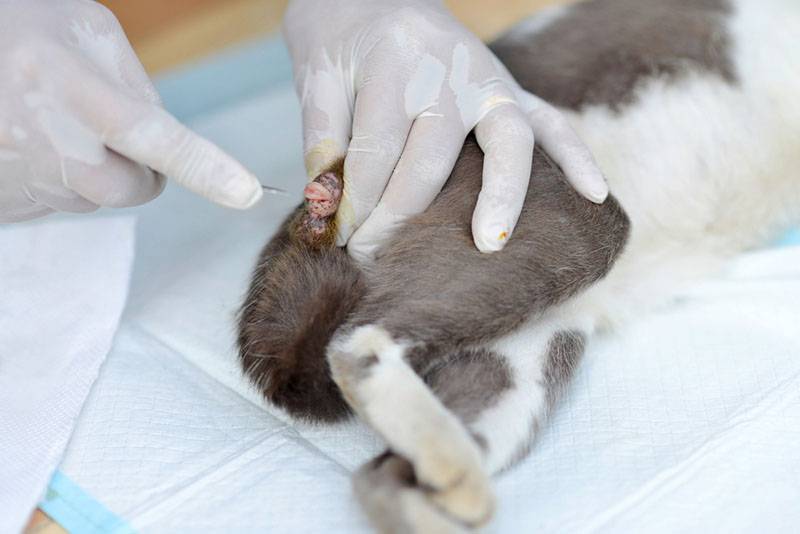
Pet care
In the postoperative period, some animal care will be required. The first day after the operation, it may be lethargic, sleep more and eat less.
The next day, there should not be any significant complaints, the appetite will be restored.
It may be necessary to wear a veterinary collar to protect the postoperative wound from dirt and the cat’s tongue. If an abdominal operation was performed and there is a seam on the abdomen, most likely, wearing a protective blanket will also be required.
Suture treatments should be carried out according to the recommendations of the operating surgeon. In most cases, no special means are prescribed, it is only necessary to remove the crusts from the seam if they appear there.
Antibiotics and painkillers are also prescribed at the discretion of the surgeon, they are not always required.
Depending on the suture material used, the threads may dissolve on their own or sutures may need to be removed and followed up after 10-14 days.
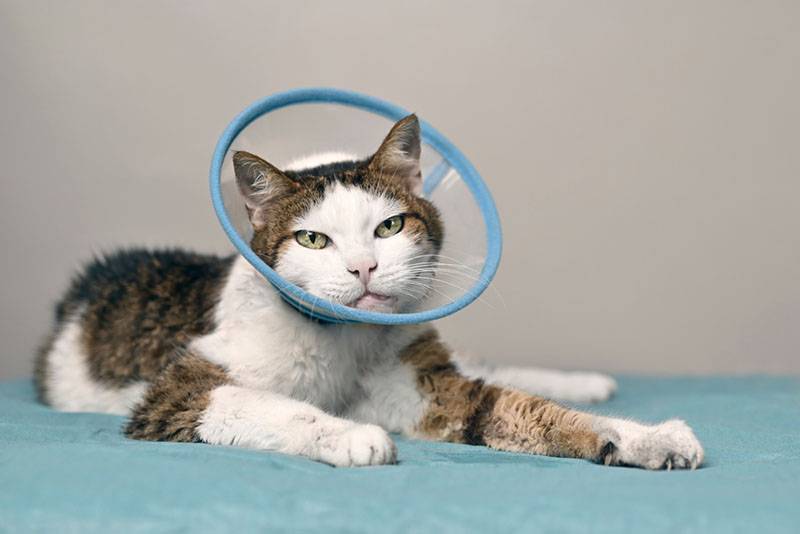
Cryptorchidism in Cats: Essentials
Cryptorchidism is the absence of one or both testes in the scrotum.
In most cases, this is a genetic hereditary disease; much less often, intrauterine infections and injuries are the cause.
You can detect cryptorchidism in a cat on your own at home, even without a doctor’s examination.
Treatment is to remove the testicles by surgery.
The lack of treatment in most cases will lead to the degeneration of the testis into tumor tissues.
Answers to frequently asked questions
Sources:
Operative surgery in animals: a textbook for universities / B.S. Semenov, V.N. Videnin, A.Yu. Nechaev [and others]; edited by B.S. Semenov. – St. Petersburg: Lan, 2020. – 704 p.
Guide to reproduction and neonatology of dogs and cats, trans. from English / ed. J. Simpson, G. England, M. Harvey – M .: Sofion. 2005. – 280 p.



